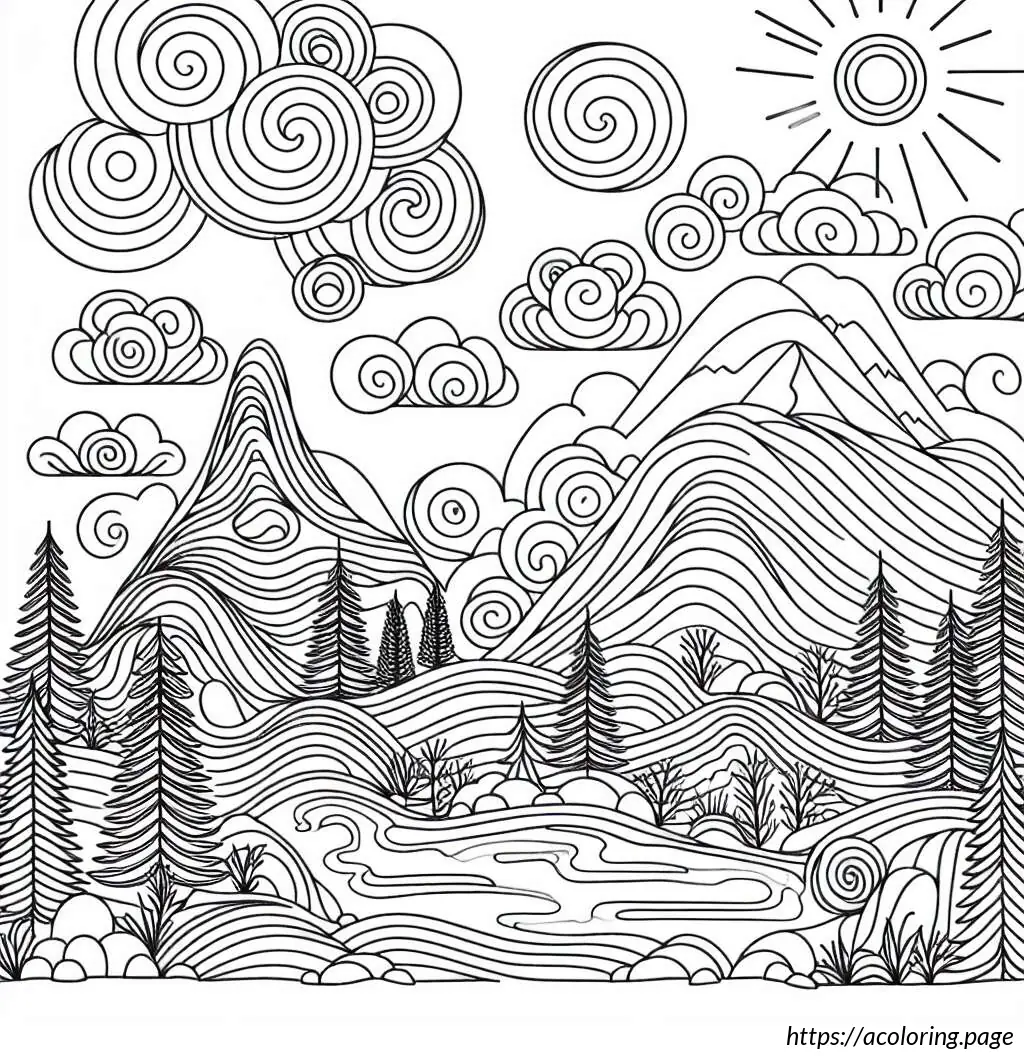

What is in this image? Be very specific. Scientific, Engineering style! No emotions, no opinions, no metaphors. Just the facts, as detailed as possible.
The image depicts a landscape scene rendered in a line art style using a black and white color palette. The composition features several distinct elements indicative of various natural forms, organized as follows1. **Clouds** The upper portion of the image contains two simplified, large amorphous shapes suggesting clouds. These shapes feature soft, rounded contours.2. **Sun or Moon** Situated in the top left corner is a small circular form, representing either a sun or a moon. This celestial body is void of internal detail.3. **Mountainous Terrain** Beneath the clouds, at the top, the image outlines several jagged, wavy lines that successively decrease in size from left to right, suggesting a series of mountain peaks or a rugged terrain.4. **Tree Line** In the lower foreground, there are several vertical, irregular shapes resembling coniferous trees. The edges of these shapes are serrated, mimicking the typical foliage pattern of pine trees or similar evergreen species.5. **Water Body** The central portion of the layout displays elongated, curvilinear forms that interlock, resembling a water body such as a river or a series of ponds. The pattern of lines within these shapes implies ripples or small waves on the water’s surface, indicating fluidity.6. **Rocks** Scattered throughout the image, particularly around the water body, are shapes with smooth, curved outlines that resemble stones or boulders.7. **Line Work** The image uses continuous, smooth black lines of uniform thickness to delineate each form, emphasizing clarity and simplicity in the depiction without shading or textural details.The overall effect is an abstract, schematic representation of a natural landscape, intended for purposes such as coloring, educational illustration, or graphic design. The use of minimal detail and the exclusion of color focus attention on the shapes and spatial relationships between the environmental elements.